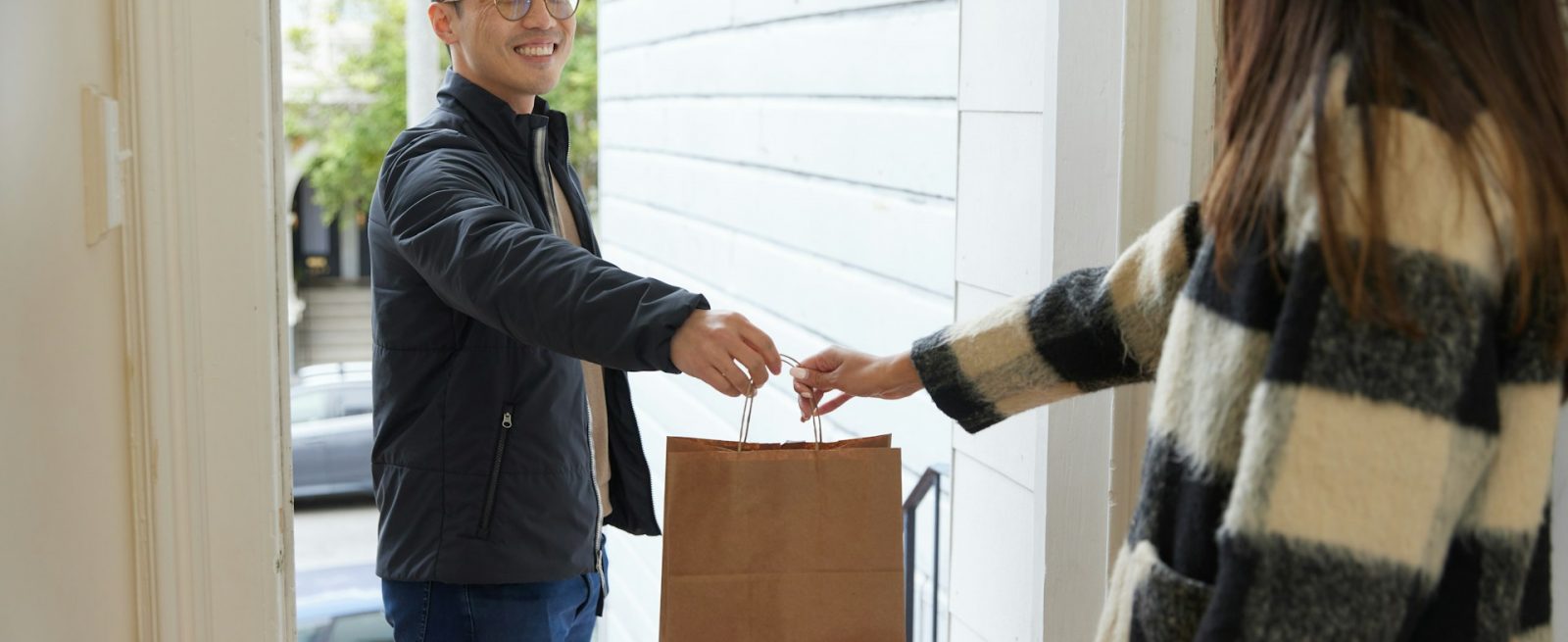Delivery and Takeout Trends
5 Min Read By Joy Pouros
As lifestyles become increasingly hectic and unpredictable, the convenience of enjoying restaurant-quality meals in the comfort of one's own home has become a big part of consumers’ lives, making takeout and delivery a big part of the restaurant industry. Let’s look at the consumer preferences driving this trend and the technology that makes it possible.
Consumer Behavior: Driving Demand
Every day, consumers are faced with the decision on what and where to eat. Cooking at home can be a good option when an individual has the time, ingredients, and knowledge to do so. It can be economical, but requires more decision making and forethought, like having the ingredients on hand. Eating at a restaurant is generally more relaxing, has a social element, and offers more variety. Delivery and takeout can provide the best of both worlds, and in today’s environment, that’s often exactly what people are looking for.
Food delivery is uniquely compatible with today’s busy consumer. Americans are stressed and busy, and delivery or takeout offers them the ability to enjoy food they didn’t have to cook without leaving the house. It’s a convenient option, requiring the least from the consumer. There’s no need to get ready to leave the house, and ordering can be accomplished from a phone – which is always in hand or nearby. There’s no hassle with parking, no reservations or wait list, and everyone gets to order whatever they want.
Working from home or having a hybrid schedule is much more prevalent since 2020, and the result is that not all working adults get dressed to go out every day. This impacts their lunch options, since they are likely to be in a residential area instead of a bustling city center. This also impacts their willingness to go out to eat after work on any given day. Again, takeout and delivery meet the consumer where they are, satisfying their desire to grab a quick lunch or a good meal after work without requiring them to leave the home.
Dining in isn’t on the decline. According to OpenTable, reservations had risen above pre-pandemic levels by the fall of 2022. Consumers still prefer a dine in experience when they feel like socializing, and they enjoy the atmosphere of a good restaurant experience. Delivery and takeout have offered a new option for when they want diverse food options and the ease of not needing to cook, but still want to stay home.
Technology: Making It Possible
Technology plays a big role in delivery and takeout – both for restaurants and for consumers. On the consumer end, delivery apps have made it possible to place orders, make special requests or customizations, pay, and even track the delivery driver – all without talking to another human.
It’s particularly convenient that delivery apps can remember previous orders, making ordering their favorites even faster and easier. Similarly, by having the payment method saved by the delivery app, it can be easily used across many restaurants without reentering information. This technology directly satisfies the consumer preference for convenience.
On the restaurant side, several types of technologies are enabling businesses to better serve the consumer demand for takeout and delivery. While there are far more types of technology critical to running a restaurant, these specifically have a big impact in managing delivery and takeout orders.
● Order Management Systems: Restaurants need to process incoming orders from various delivery platforms. These systems integrate with third-party delivery apps, allowing orders to be received, processed, and prioritized. This streamlines order fulfillment, reduces errors, and ensures timely delivery to customers.
● Kitchen Display Systems (KDS): KDS solutions replace paper tickets. They manage and display incoming orders in the kitchen, prioritizing orders based on factors like preparation time, delivery distance, or pacing multi-course meals for patrons dining in. This optimizes workflow, reduces wait times, and lowers the probability of human error.
● Delivery Logistics Platforms: Restaurants using their own drivers leverage delivery logistics platforms to optimize delivery routes, dispatch drivers efficiently, and track orders in real time. These platforms use algorithms to minimize delivery times and maximize driver utilization, reducing delivery costs and improving customer satisfaction.
● Cloud-Based Management Systems: Cloud-based management systems streamline administrative tasks such as menu and hours updates by enabling updates across all the online properties and third-party apps the restaurant is available on.
These technologies enable restaurants to serve more consumers how they want to be served, thus maximizing capacity without expanding the dining room.
Show Me the Money: Takeout and Delivery Impact on Business
Delivery and takeout trends affect traditional restaurants and establishments that already embraced delivery. What factors do each type of business need to consider as they move forward?
Impact on Traditional Businesses
Traditional restaurants that don’t offer takeout and delivery may fall behind their competition as consumers grow increasingly expectant that their favorite restaurants are available via multiple methods of ordering. And it’s not enough to merely offer takeout and delivery. When businesses are set up to receive orders but not opitimized to manage delivery and takeout, the customer experience may suffer as orders are late, cold, or incorrect.
Restaurants interested in expanding their delivery and takeout operations may need to dig into their operations to avoid common issues. Receiving orders from food delivery apps may require they to streamline their kitchen and adjust staffing.
Traditional restaurants that offer takeout and delivery while investing appropriately in technology can have the best of both worlds. They can satisfy consumer demand and maintain a high standard of quality and customer experience. This strategic approach not only fosters stronger brand loyalty but also ensures sustainable business growth.
Challenges and Opportunities for Delivery-Centric Models
The increased takeout and delivery have created new opportunities for business owners. Ghost kitchens, virtual kitchens that do not have dine in options, have sharply increased in the past five years. As consumers have become more comfortable with delivery apps, it’s grown increasingly easy to open a restaurant with no physical location and make the menu available online. With cheaper real estate options and without the front of house staff expenses, the barrier of entry is much lower than for a traditional restaurant, making this an attractive and accessible option for entrepreneurs.
That said, delivery-centric or -exclusive restaurants must be technologically savvy in order for their business model to run smoothly. They also face unique choices that will affect their success. Delivery apps provide their own drivers, but the restaurant loses control over that part of the consumer experience. Restaurants can use their own delivery drivers, which allows them to control more of the experience, but also gives them more overhead in recruiting, training, and retaining labor in a tight labor market.
World and National Events that Affect Takeout and Delivery
It’s difficult to talk about any dining trends without mentioning Covid-19. The pandemic changed consumer behavior suddenly and dramatically, leaving lasting changes on the industry. Some of these changes, like the sudden emphasis on cleanliness and social distancing, were pandemic-specific and unlikely to have spontaneously materialized if Covid-19 had not occurred. Others, like the rise in technology and consumer preference for flexibility, were likely inevitable but Covid-19 changed the timeline. The pandemic was only one event that affected the trajectory of delivery and takeout.
At the end of the pandemic, there was “revenge spending” where consumers made up for lost time and pent up demand for travel, dining out, and events exploded. Later, inflation heavily affected prices at restaurants and at grocery stores – though at different times. These relational price changes affected consumer behavior.
The rise of delivery and takeout trends reflects a fundamental shift in consumer behavior and the restaurant industry as a whole. Despite changing world and national circumstances, the demand for convenient dining options is expected to persist. Ultimately, whether enjoying a meal at a restaurant, opting for takeout, or having food delivered, what remains critical is the ability to serve delicious cuisine and meet customer expectations, regardless of the setting. Restaurants offering delivery and takeout options have more flexibility in how they are meeting consumer needs, providing them with more agility during tumultuous times.


